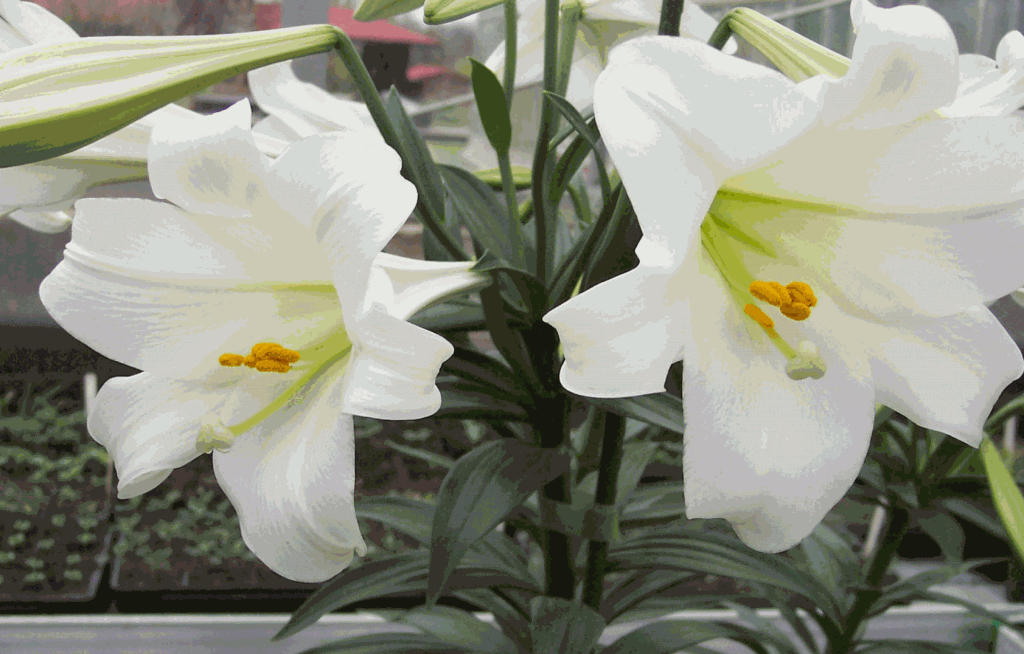Millions of Easter Lilies are flowering in homes all across the country. Most of them get tossed out after they are done blooming.
A small percentage of people plan to keep their plant hoping to have it bloom next Easter. “That ain’t gonna happen”, as one famous pawnbroker on TV likes to say. There is an art and science to getting Easter Lilies to bloom exactly on Easter weekend. And that is way beyond the skill of nearly all gardeners.

Remember Easter lily flowers are brilliant white so take that into consideration when deciding where to plant outside.
You can however, save your lily and have it bloom in your garden next summer. All you need to do is keep it in good shape for the next six weeks or so.
The most common problem you are likely to see is water-logged roots. This happens when the foil pot wrapper is left on the pot. Since water has no where to drain, it collects in the foil and pot, drowning the roots. So, pour out any extra water from the foil wrapper or take off the wrapper completly.
Keep the plant in a cool, bright spot in your house so that the leaves can do their thing with photosynthesis.
In mid-May or after the last frost, plant the lily into a flower bed in full sun. Water and fertilize it along with the rest of your plants.
Then, next summer and each summer after that, your lily will bloom and become a permanet part of your landscape.
Bob

